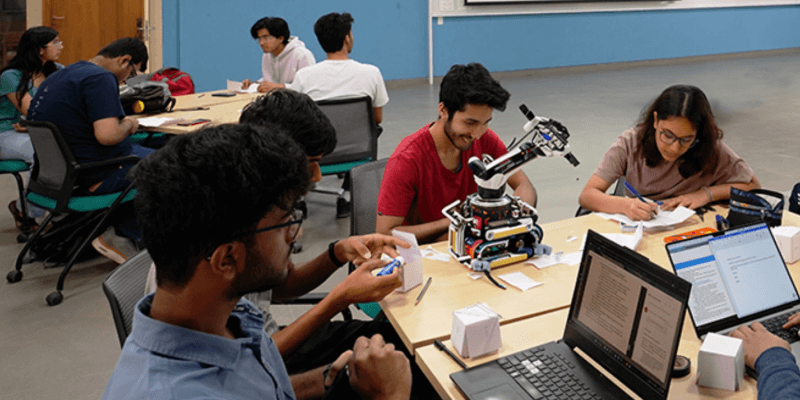
After decades of research since the end of the Second World War, the promise of Artificial Intelligence (AI) is now coming true. Applications of AI in language, genetics, robotics, finance, medicine, social media, etc., have the potential to recalibrate how humans work, reshape human values, and indeed redefine what it means to be human. On the one hand, AI will democratize the benefits of cutting-edge technologies by bringing them to everyone’s palm through smartphones and wearables. Already, we have been witnessing how AI tools are helping us in myriad ways through apps used for navigation, weather prediction, editing photos, converting speech-to-text, writing essays, finding partners, etc. AI will continue to make our lives easier and more productive.
However, the development of advanced AI models poses a new sustainability dilemma. Consider the fact that training an AI model like ChatGPT-4 a single time has a carbon dioxide emissions footprint equal to many thousands (even hundreds of thousands) of human lifetimes, depending on the model’s size. Now think about how different organizations are likely to train many thousands of such models in parallel! This is limited to only training the model. Another estimate says that each query to the model consumes four to five times more amount of energy than querying a search engine.
As India prepares itself to jump on the AI bandwagon, it will require even more robust sources of energy to meet the demands of these models. India’s heavy dependence on fossil fuels will exacerbate the situation as power-hungry AI models will lead to more carbon emissions into our atmosphere. As a result, our ecologically fragile regions will face the effects of more extreme weather events.
This is not to suggest that Indian companies and universities should not work on advanced AI models. Of course, India must be at the forefront of advances in AI. This is not a revolution we would want to miss at any cost. The recently launched ambitious AI Mission by the Government of India has earmarked more than 10,000 crore rupees for the development of AI infrastructure.
Among other initiatives, this mission aims at stimulating the establishment of physical infrastructure such as data centers which are generally huge (occupying the same area as many football fields combined). These data centers across the world have already overtaken the aviation industry by accounting for 2.5 to 3.7 percent of global carbon emissions. Only a few of the data centers across the world are presently “green” data centers, i.e., they derive their energy requirements through renewables.
For the foreseeable future, there will be a multifold increase in the demand for such data centers to develop more powerful AI algorithms. One of the ways policymakers can intervene in this regard is by forming policies that nudge AI developers into making more energy-efficient models by optimizing the model architecture and processors. For example, the open-access BLOOM model, developed by the BigScience project in France, has a much lower carbon footprint despite being of a similar size as the ChatGPT-3 model.
With the Government of India’s stated goal of making India energy independent by 2047, there is already an appreciation of the policy to shift towards renewables. In this regard, at the Raisina Dialogue 2024 conference last week, the former CEO of NITI Aayog Amitabh Kant made a strong pitch for renewables, especially green hydrogen. Green hydrogen, wind energy, solar energy, or scheduling the timing of running models based on the availability of renewable energy at the time of day — no policy measure must go unexplored while tackling this sustainability challenge. This challenge will keep on demanding more and more attention as we build bigger, better, more intelligible AI models.
This article was originally published in Express Computer
Dr. Siddharth is an Assistant Professor at Plaksha University



